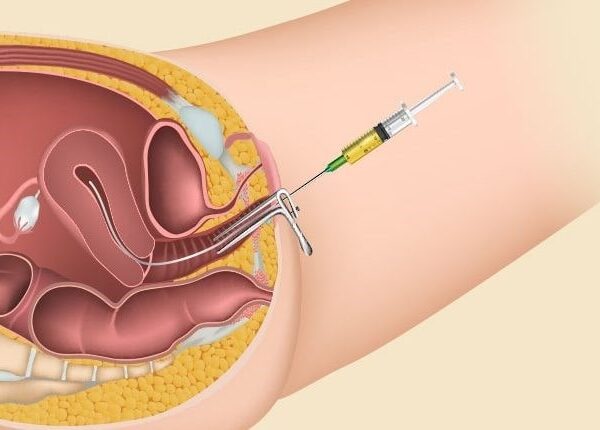Nappy rash, or diaper dermatitis, is a common condition that affects many infants and young children. As health professionals working in primary care, it’s essential to recognize the different types of nappy rashes and understand their management to provide effective care for our young patients and their families. This blog aims to provide an overview of the various types of nappy rashes and offer practical management strategies.
Types of Nappy Rashes
- Irritant Contact Dermatitis
Irritant contact dermatitis is the most common type of nappy rash, caused by prolonged exposure to moisture, urine, and faeces. The skin appears red and inflamed, particularly in areas directly in contact with the nappy.
Management:
Frequent Nappy Changes: Encourage parents to change nappies regularly to keep the area dry.
Barrier Creams: Use barrier creams containing zinc oxide or petroleum jelly to protect the skin.
Gentle Cleansing: Advise gentle cleaning with water or alcohol-free wipes; avoid soaps and wipes with alcohol or fragrances.
- Candidal Dermatitis
This type of rash is caused by a fungal infection, typically Candida albicans. It often occurs in the creases of the skin and presents with red, shiny patches and satellite lesions.
Management:
Antifungal Creams: Prescribe topical antifungal creams such as clotrimazole or miconazole.
Keep the Area Dry: Emphasize the importance of keeping the area dry and aerated.
Barrier Creams: Continue the use of barrier creams to protect the skin.
- 3. Allergic Contact Dermatitis
Allergic contact dermatitis results from a reaction to substances in wipes, creams, or detergents. It appears as red, itchy, and swollen skin, sometimes with blisters.
Management:
Identify and Avoid Allergens: Help parents identify and avoid the allergens by switching to hypoallergenic products.
Topical Steroids: Short-term use of mild topical steroids, such as hydrocortisone, may be necessary to reduce inflammation.
Soothing Emollients: Recommend soothing emollients to help repair the skin barrier.
- Bacterial Dermatitis
Bacterial infections, usually caused by Staphylococcus aureus or Streptococcus species, can complicate nappy rash. Signs include pustules, honey-coloured crusts, and oozing.
Management:
Topical or Oral Antibiotics: Prescribe topical antibiotics like mupirocin or, in severe cases, oral antibiotics.
Hygiene: Stress the importance of good hygiene practices to prevent the spread of infection.
Monitor for Systemic Symptoms: Be vigilant for signs of systemic infection that may require further intervention.
- Seborrheic Dermatitis
Seborrheic dermatitis is characterized by yellow, greasy scales, and redness, typically seen in the nappy area and other seborrheic regions like the scalp.
Management:
Antifungal and Anti-Inflammatory Treatments: Use antifungal and mild corticosteroid creams to manage symptoms.
Regular Cleansing: Advise regular cleansing and use of emollients to reduce scales.
- Psoriasis
Psoriasis in the nappy area presents with well-defined, red plaques with a silvery scale. It is less common but should be considered in persistent cases.
Management:
Topical Steroids and Vitamin D Analogues: Use mild to moderate topical steroids and vitamin D analogues.
Moisturizers: Recommend regular use of moisturizers to maintain skin hydration.
Referral to Dermatology: Consider referral to a dermatologist for further assessment and management.
General Prevention and Care Tips
Regardless of the type of nappy rash, several general care tips can help prevent and manage these conditions:
Frequent Nappy Changes: Encourage changing nappies promptly when wet or soiled to reduce skin exposure to irritants.
Skin Protection: Use barrier creams regularly to protect the skin from moisture and irritants.
Proper Cleansing: Use mild, fragrance-free cleansers or plain water; avoid rubbing the skin harshly.
Air Exposure: Allow the nappy area to be exposed to air when possible to keep it dry.
Clothing: Recommend loose-fitting, breathable clothing to reduce friction and moisture accumulation.
Conclusion
Nappy rashes are a common concern in paediatric primary care, and understanding their various types and effective management strategies is crucial for providing the best care. For a deeper dive into diagnosing common skin conditions in babies and children, check out this insightful article on Diagnosing Common Skin Conditions in Babies and Children by Practitioner Development UK. This resource offers valuable information to enhance your practice and support your young patients effectively.
References
Atherton, D.J. (2004) ‘A review of the pathophysiology, prevention and treatment of irritant diaper dermatitis’, Current Medical Research and Opinion, 20(5), pp. 645-649. DOI: 10.1185/030079904125003816.
Kliegman, R.M., Stanton, B., St. Geme, J.W., Schor, N.F. and Behrman, R.E. (2016) Nelson Textbook of Pediatrics. 20th ed. Philadelphia: Elsevier. pp. 2347-2349.





